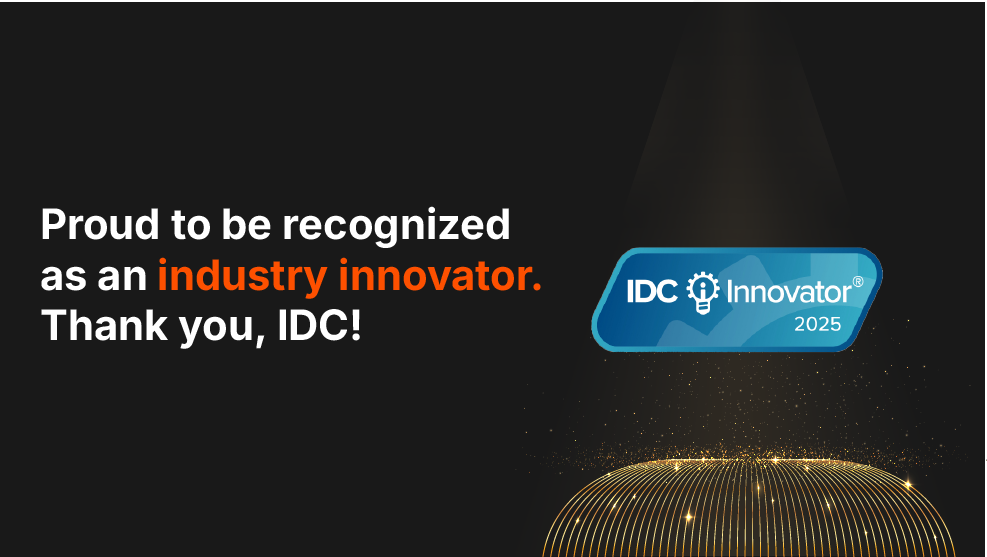Ever since California rolled out the Net Energy Metering 3.0 policy (NEM 3.0), residential solar installations have taken a significant hit. While commercial installations are unaffected by the new policy, it’s not something you want to ignore. The NEM 3.0 policy is top of mind for solar businesses in California that are involved in residential installation projects.
Is thinking about the future of the solar market in California causing you distress? What if we tell you…
- California’s NEM 3.0 Policy was not all bad news
- Don’t have to lose your residential customers just yet
- Hidden opportunities to supercharge your solar business
Let go of your worries and relax. Read this article. We’ll help unpack the Net Energy Metering 3.0 policy and some of the opportunities that it brings to solar installers like you.
Breakdown of NEM 3.0 in detail
There is a lot of confusion around the Net Energy Metering 3.0 policy. The update NEM 3.0 policy is relatively new and makes some changes that solar installers need to understand if they are going to be able to show the financial benefits to their customers. So, why is NEM 3.0 also known as the Net Billing Tariff? Due to changes made in the new NEM 3.0 implementation, the way homeowners with solar panels are compensated for the electricity they generate has changed. This change took effect in California in April 2023, ruffling features of those used to being compensated under the old rules.
As you can guess, 3.0 is the newest version of NEM 1.0 and NEM 2.0, both of which allowed homeowners with solar panels to receive credits for the excess electricity their system produced and fed back to the grid. The best part? The credits were typically based on the retail rate of electricity! Homeowners received a dollar-for-dollar credit for every kilowatt-hour (kWh) of excess solar energy they sent to the grid. This provided a significant incentive for installing solar panels, as homeowners could offset their electricity bills and potentially even earn money by generating more solar power than they consumed.
But NEM 3.0 introduced a new system called net billing that strictly reduced the compensation for excess solar power generation. With NEM 3.0 in place, the value of your exported solar energy is no longer based on the retail price, but rather on the estimated cost the utility would avoid by not having to generate that electricity themselves. This new method is called “avoided cost”. Avoided cost is calculated based on factors like time of day, day of week, and season of the year.
This change in policy has discouraged investment homeowners who were easily getting by selling excess power back to the grid. We can safely say that by discouraging exporting excess solar and reducing incentives, NEM 3.0 is pushing homeowners to focus on self-consumption of the power they generate. Even though the value of electricity exported to the grid is lower, the retail rate paid by the consumer to buy power from the grid remains unchanged.
The compensation structure is the downside of the NEM 3.0 policy. One of the reasons customers shifted to renewable and sustainable sources of energy was its compensation benefits. Homeowners were able to save costs on their power usage and also got cash for sending in the extra power to the grid. Definitely, it was a great investment but NEM 3.0 made solar panels a less financially attractive investment with its lower compensation structure. Let’s be clear, solar panels are a great cost savings option for customers in terms of self-consumption under NEM 3.0. It’s impact is only on the people who were investing in the excess power generation. Here are some of the potential impacts of NEM 3.0:
- Slower growth in residential solar: Since the financial incentive for solar is reduced, potentially leading to a slowdown in new solar installations (download solar installation checklist) in California.
- Increased interest in solar storage: Since NEM 3.0 rewards self-consumption, homeowners may be more interested in battery storage systems to store excess solar energy for use during peak hours when grid electricity prices are highest.
- Focus on customer education: Solar installers will need to educate homeowners about NEM 3.0 and how to optimize their solar systems for self-consumption to maximize the benefits.
1. Package your solar panel installations with battery storage systems
NEM 3.0 introduces a shift from the previous net metering system. Previously, excess solar energy produced during the day could be credited against your electricity bill at a 1:1 ratio. Under NEM 3.0, this crediting rate will decline. This is where solar-storage packages come in.
What NEM 3.0 says: The new regulations don’t diminish the value of solar energy generation. They do, however, incentivize storing excess solar power for later use.
What you can do: Package your solar panel installations with battery storage systems. This allows homeowners to store excess solar energy generated during the day and use it at night when electricity rates are typically higher.
The opportunity: By combining solar and storage, you offer a complete solution that helps Californians maximize their energy independence and minimize the impact of NEM 3.0’s crediting changes.
Let’s say a homeowner typically generates 20 units of solar energy daily but only consumes 15 units. Under NEM 2.0, they would receive a credit for 5 units at a 1:1 ratio. With NEM 3.0, the credit rate for those 5 units might be lower. However, with a battery system, they can store those 5 units and use them at night, effectively offsetting the need to buy electricity from the grid during peak hours.
2. Gain a competitive advantage through in-depth knowledge
Understanding the intricacies of NEM 3.0 is key to setting yourself apart.
What NEM 3.0 says: The regulations introduce new concepts like time-of-use billing, where electricity rates fluctuate based on peak and off-peak hours.
What you can do: Become an expert on NEM 3.0. Stay up-to-date on the latest regulations and billing structures.
The opportunity: Educate potential customers about NEM 3.0 and how it affects them. Demonstrate how your solar-storage packages can help them navigate the new system and maximize their savings.
Let’s say you have a fairly competent competitor who only has a basic understanding of NEM 3.0, while you’ve become a certified NEM 3.0 specialist. During consultations, you can explain the new time-of-use rates and how your solar-storage packages can help the homeowner take advantage of lower electricity rates during off-peak hours. This in-depth knowledge positions you as a trusted advisor and increases your chances of winning the project.
3. Provide educational resources about net energy metering to build trust
Californians are known for being environmentally conscious. Leverage this to your advantage.
What NEM 3.0 says: The California Public Utilities Commission (CPUC) is committed to increasing renewable energy usage. NEM 3.0, despite the crediting changes, is a step towards that goal.
What you can do: Provide educational resources about NEM 3.0 and the benefits of solar power. Offer free consultations to explain how NEM 3.0 works and how solar can still be a sound investment. Find out the reasons behind the explosive growth of solar installations.
The opportunity: By empowering Californians with knowledge, you build trust and establish yourself as a reliable partner in their clean energy journey.
Develop a series of blog posts or host webinars explaining NEM 3.0 in layman’s terms. Address common concerns homeowners might have and showcase real-world examples of how solar storage systems can benefit them under the new regulations. This will establish you as a thought leader and position your company as the go-to resource for solar solutions in the NEM 3.0 era.
4. Explore alternative financing models for customer savings
NEM 3.0 might raise concerns about affordability for some Californians. Here’s where exploring alternative financing models can open doors.
What NEM 3.0 says: The regulations are designed to be fair and accessible, but the upfront cost of solar panels and batteries can still be a barrier for some.
What you can do: Research and offer alternative financing options alongside your solar-storage packages.
The opportunity: By providing diverse financing solutions, you can make solar power accessible to a wider range of Californians.
There are several financing options to consider:
- Solar Power Purchase Agreements (PPAs): With a PPA, a third-party company owns and installs the solar panel system on your customer’s home. The homeowner pays a fixed monthly rate for the electricity generated, similar to a traditional utility bill. This eliminates the upfront cost for the homeowner.
- Solar loans: These loans are specifically designed for solar panel and battery installations. Several financial institutions offer these loans with attractive interest rates.
- Property Assessed Clean Energy (PACE) Programs: PACE programs allow homeowners to finance solar projects through property tax assessments. This can be a good option for those who don’t qualify for traditional loans.
Homeowners interested in solar power might be hesitant due to the initial investment. By offering a PPA option, you can remove that barrier. They can enjoy the benefits of solar energy with a predictable monthly payment that might even be lower than their current electricity bill. This opens doors to a whole new customer segment who might have previously considered solar out of reach.
5. Offer innovative solutions like smart home integration and solar programs
The solar industry is constantly evolving. Here’s how to stay ahead of the game.
What NEM 3.0 says: The regulations themselves are designed to foster innovation in the solar and storage sectors.
What you can do: Continuously educate yourself about new technologies and trends in solar and battery storage. Build strong relationships with manufacturers and distributors to stay informed about cutting-edge solutions.
The opportunity: By being at the forefront of innovation, you can offer your customers the most efficient and cost-effective solar storage packages available.
Here are some areas to keep an eye on:
- Battery technology advancements: Battery storage capacity and lifespan are constantly improving, leading to more affordable and durable systems.
- Smart home integration: Solar systems are increasingly integrating with smart home technologies, allowing for better energy management and optimization.
- Community solar programs: These programs allow multiple homeowners to share the cost and benefits of a single solar installation.
Imagine a new, highly efficient battery technology hits the market. By having strong relationships with manufacturers, you can be among the first installers to offer this new technology to your customers. This positions you as a leader in innovation and attracts customers who value cutting-edge solutions.
By embracing these five key areas, you can not only navigate the changes brought about by NEM 3.0 but also thrive in the evolving Californian solar market. You’ll empower Californians to make informed decisions about their clean energy future, while solidifying your position as a trusted solar solutions provider.
6. Improve cash flow through regular customer engagement
NEM 3.0 introduces a new billing structure with both monthly charges and an annual true-up. While this might seem like an administrative hurdle, it presents a unique opportunity for solar installers.
What NEM 3.0 says: Residential customers under NEM 3.0 will receive a monthly bill with both charges and any remaining credits from solar generation.
What you can do: Leverage the increased customer touchpoints created by monthly billing to build stronger relationships and explore new business opportunities.
The opportunity: Monthly billing allows for more frequent interactions with your customers. Use this to your advantage!
Here’s how you can turn this change into a positive:
- Enhanced customer engagement: With monthly billing statements, you have more opportunities to connect with your customers. Offer consultations to review their energy usage and suggest ways to optimize their solar system’s performance. You might also introduce additional services, like energy efficiency upgrades, that can further reduce their reliance on grid power.
- Improved cash flow for installers: Monthly billing can streamline your cash flow. Previously, under NEM 2.0, you might have had to wait a year for the true-up to receive payment for your services. With monthly billing, you receive payments more frequently, which can improve your financial stability.
Under NEM 2.0, a customer might not have contacted you for a year after installation. Now, with monthly billing statements, you can reach out to them regularly. During these interactions, you can identify potential areas for improvement in their solar setup or introduce new services they might find valuable. This not only strengthens your customer relationships but also opens doors to additional revenue streams.
By embracing the changes brought about by NEM 3.0’s billing structure, you can foster stronger customer connections, explore new business opportunities, and improve your cash flow. This positions you for long-term success in the ever-evolving Californian solar market.
7. Incentivize customers to become more energy-independent
NEM 3.0 introduces the concept of non-bypassable charges, which are fees applied to all electricity imported from the grid, regardless of solar generation. While this might seem like a drawback, it can be a powerful motivator for increased solar energy use and battery storage adoption.
What NEM 3.0 says: All customers are subject to non-bypassable charges on their electricity bills, which cover essential grid maintenance and public programs.
What you can do: Educate your customers about non-bypassable charges and how solar-storage packages can help them minimize these costs.
The opportunity: Non-bypassable charges incentivize customers to become more energy-independent. Use this to your advantage!
Here’s how you can turn non-bypassable charges into a selling point:
- Incentivizing energy independence: Explain how non-bypassable charges are applied to all grid-imported electricity. This can motivate customers to maximize their solar energy consumption and reduce their reliance on the grid. By highlighting the benefits of self-consumption, you can make a strong case for solar-storage packages.
- Marketing energy storage solutions: Non-bypassable charges create a clear economic advantage for battery storage systems. By storing excess solar energy during the day and using it at night, customers can significantly reduce their dependence on grid power and minimize non-bypassable charges. Showcase real-world examples and cost analyses to demonstrate the financial benefits of battery storage.
Imagine a customer who is initially hesitant about the cost of a solar-storage package. By explaining non-bypassable charges and how battery storage can help them avoid these fees, you can shift their perspective. By highlighting the long-term cost savings and increased energy independence, you can make a compelling case for the investment.
By leveraging non-bypassable charges as a selling point, you can educate customers, promote the benefits of solar-storage solutions, and position yourself as a trusted advisor on their path to energy independence. This will solidify your place in the California solar market and help you thrive under NEM 3.0.
Solidify your place in the Californian solar market
The NEM 3.0 policy is not the end for California’s solar installers. Focus on solar battery storage systems to maximize self-consumption for homeowners. Become a NEM 3.0 expert and educate your customers. Offer financing options and advanced solutions to stay competitive. Embrace the new billing structure to strengthen customer relationships and improve cash flow. If you adapt these strategies, you can succeed in the new landscape.
Step up and be a force for good. For every T-shirt you wear, over 700 gallons of water is consumed. You hold the power to reclaim gallons of water with every garment you wear. Choose minimalism; Save water. Mindful closet for a sustainable future!







